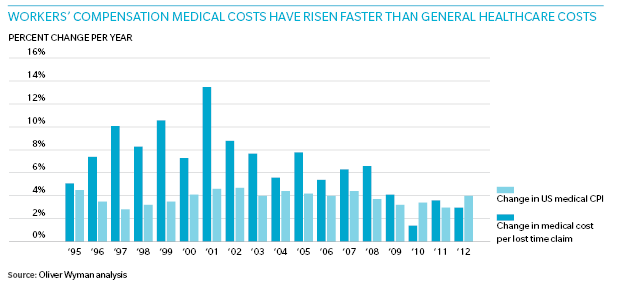However, thus far the so-called “volume to value revolution” has had little effect on the world of workers’ compensation insurance. That needs to change. By bringing workers' compensation in line with the emerging model of healthcare, it can be used to position workers' compensation as an attractive add-on and fundamentally change the relationship between comp and health insurance. We believe insurers today should seize the opportunity to rethink an often unprofitable business model. When combined with preventive safety and wellness programs, this will help give employers what they need: a healthy, happy, and productive workforce.
The Problems With Workers' Comp
As in much of the healthcare system, physicians and hospitals treating injured workers are paid using a fee-for-service approach that tends to drive up the volume of services delivered. The system has a long history of defeating reform efforts from state regulators. As one physician told us, “If you pay me less per unit, I’ll do more units.”








